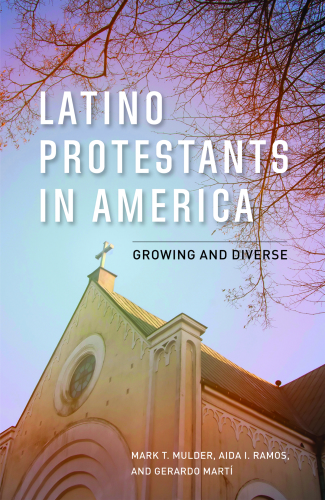
Latino Protestants in America
Growing and Diverse
کتاب های مرتبط
- اطلاعات
- نقد و بررسی
- دیدگاه کاربران
نقد و بررسی

April 3, 2017
Mulder, professor of sociology at Calvin College; Ramos, assistant professor of sociology at George Fox University; and Marti, professor of sociology at Davidson College, have teamed up as part of the Latino Protestant Congregation Project, a joint endeavor of Davidson College and Calvin College, to create this cooperative study. By 2030, they write, it is estimated that half of all Latinos in the United States—who currently make up 17% of the population—will be Protestant. The “Latino Reformation,” as Time named it, has remained largely invisible to the general public, fellow Protestants, and social scientists, in part because few dedicated researchers speak Spanish. But now the Latino Protestant Congregation Project has released its initial substantive and complex findings, examining styles of worship, values, congregation demographics, leadership structures, and sociopolitical perspectives. The fine mix of fresh quantitative data and engaging qualitative case studies gives a rich feel for the diversity of Latino Protestant communities, from a Dutch-Latino Reformed church in Iowa to the non-denominational church in Los Angeles that encourages members to “transcend” ethnicity. Additionally, the chapter on Latino Protestants’ political and social engagement is required reading for anyone interested in likely Latino voting patterns in 2018 and beyond.

June 1, 2017
Mulder (sociology, Calvin Coll., MI; Shades of White), Aida I. Ramos (sociology, George Fox Univ., OR), and Gerardo Marti (sociology, Davidson Coll., NC; Worship Across the Racial Divide) present a revealing and surprising glimpse into Latino religious subcultures in the United States. The authors contend that Latino Protestantism is an important yet neglected area of study. Not only is the Latino demographic growing, but Latino Protestants are running against the trend of a general decline of affiliation in organized religion. Based on information from the qualitative study the Latino Protestant Congregation (LPC) Project as well as other critical investigations that considered a number of U.S. congregations, the authors present these groups as dynamic, diverse, and as conflicted as other religious denominations, highlighting their distinctive features. The authors state that their goal here is to offer a road map for future study. Indeed, this provides fascinating detail that gives way to further research. VERDICT General sociologists and sociologists of religion will find this study beneficial, and even nonexperts will discover something new in this informative read.--JW
Copyright 2017 Library Journal, LLC Used with permission.

























دیدگاه کاربران